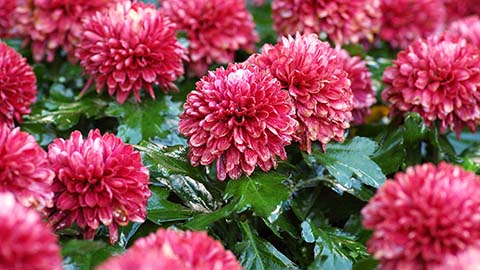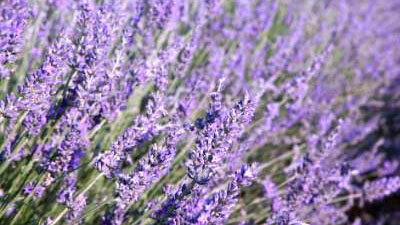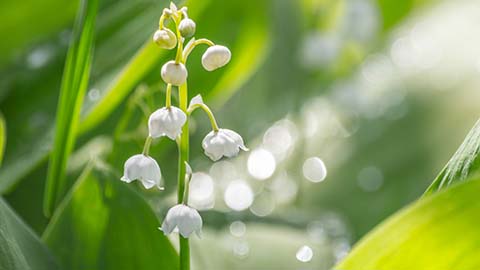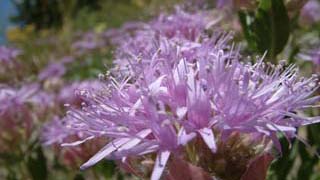Wisteria in the Garden
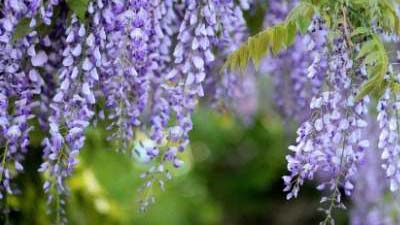
Wisteria is a vigorous, cold-hardy, long-lived, true climbing/twining vine best known for large panicles of beautiful spring blooming flowers. Though all cultivated wisterias are similar in height, leaf and flower structure, the two most important in the landscape trade are Japanese wisteria (Wisteria floribunda) and Chinese wisteria (Wisteria chinensis). With extensive training they can be grown in tree-form, but are more commonly used to cover an arbor or trellis. There are many cultivars for flower color including lilac, white, purple and blue. Flower clusters range from 6 inches to 1½ feet in length and are fragrant.
Japanese Wisteria
- Flowers open over several days, from the cluster base to the tip
- Longer flowering period
- Less shade tolerant than Chinese wisteria
- Stems twine clockwise
- USDA Hardiness Zone 4
Chinese Wisteria
- Flowers open all at once, offering a great show.
- Flowering time is shorter but showier
- Stems twine counterclockwise
- USDA Hardiness Zone 5
- Quite shade tolerant
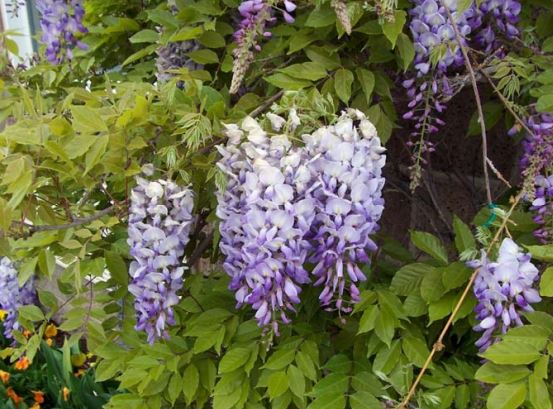
Chinese Wisteria
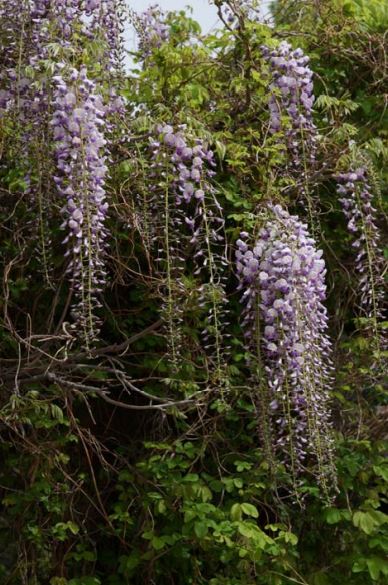
Japanese Wisteria
Cultural Requirements
| Location | Plant where they are protected from the wind |
| Sun Coverage | Prefer full sun. Established vines grow and flower in partial shade. Chinese wisteria is more tolerant of shade. |
| Soil | Tolerates a wide range of soil conditions. Susceptible to iron chlorosis at high soil pH. |
| Water | Keep soil moist especially when in bloom and when flower buds are forming in August/September. Moderately drought tolerant, but requires periodic deep watering during the summer and fall months. |
| Fertilization | Wisteria have nitrogen-fixing capabilities and do not usually need additional nitrogen. Adding phosphorous may help encourage blooming if soil is deficient, but most Utah soils contain adequate phosphorous for wisteria. |
| Flowering | Wisteria planted from seed take up to 15 years to start flowering. Commercially available plants are grafted with known cultivars, and are the most reliable bloomers. |
| Disease | Not normally prone to significant pests or diseases. Excessive watering may cause root rot. Iron chlorosis caused by high soil pH or root diseases causes leaf yellowing, usually with bright green veins. Refer to the USU publication below for assistance in controlling chlorosis: Control of Iron Chlorosis in Ornamental and Crop Plants |
| Concerns | Capable of destroying all but the strongest wooden or metal structures due to extensive weight and twining vines. |
Pruning/Training
Wisteria need sturdy support such as an arbor, pergola or strong fence. They destroy lattice work and other types of prefabricated trellises, so keep them under control. Opt for structures using 6x6 or larger wood posts, or steel beam construction. Do not let them get under house siding or inside down spouts/rain gutters.
New plants and shoots need training to get them growing in the right direction. Pruning plants for their first 3-5 years is to develop their permanent structure. Wisteria produce flowers on wood that was produced the previous growing season (or 1- year-old wood). It will be thinner, lighter in color, and more flexible than older wood. Care must be taken to not remove all the flowering wood when pruning.
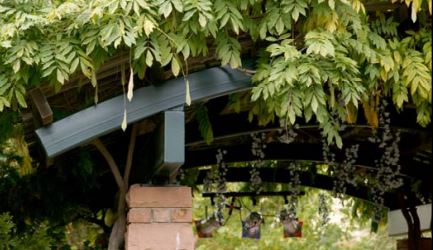
Example of a well-built structure suitable for long-term growth
of wisteria.
Prune the vines twice each year; once before plants leaf out in the spring, and again just after flowering. Pruning and training help control vigor and promote flowering. Before they leaf out prune away any dead, diseased or damaged branches and shoots growing into the wrong area, and to keep the plant Japanese Wisteria within its allotted space. Trim each shoot of flowering wood (last year’s growth) to 6-12 inches. Avoid cutting into 2-year-old wood, as this stimulates excessive vegetative growth that interferes with flowering. After they have finished flowering, remove about half of each new long vine. Repeat this process each year to have large showy panicles of flowers.
Growth of wisteria can be rampant, and they may overwhelm surrounding plants and structures if left unchecked. Minor pruning can be done at any time to keep wisteria within their allotted space. Sucker sprouts may form at the base and should be removed as soon as possible. Occasional heavy pruning may be necessary to open up plants on a trellis or pergola, and clean out older wood.
Related Species
Wisteria new to the nursery trade include two North American species; American wisteria (Wisteria frutescens) and Kentucky wisteria (Wisteria macrostachya). American wisteria is hardy to Zone 5 with ‘Amethyst Falls’ being the most common cultivar available. Kentucky wisteria is rated to Zone 3, with ‘Blue Moon’ being the most common cultivar available. These are gradually becoming more popular, and are probably better behaved than the Asian species. They are not widely cultivated in Utah and are available through internet sources.
References
- Cathey, Henry Marc. (2004).American Horticultural Society A to Z Encyclopedia of Garden Plants. DK Publishing, Inc.
- Editors of Sunset Magazine The New Western Garden Book: The Ultimate Gardening Guide. 9th Ed. (2012). Sunset Publishing Company
- Swezey, Lauren Bonar. “Choosing a Wisteria.” Sunset. N.p., n.d. Web. 25 May 2015. http://www.sunset.com/garden/flowersplants/choosing-wisteria
- “Wisteria sinensis - Plant Finder.” Wisteria sinensis. N.p., n.d. Web. 25 May 2015. http://www.missouribotanicalgarden.org/PlantFinde r/PlantFinderDetails.aspx?kempercode=c269
Published July 2015
Utah State University Extension
Peer-reviewed fact sheet
Authors
Michael Caron, USU Extension Assistant Professor; Taun Beddes, USU Extension Associate Professor; Gabriela Judd, USU Student Intern
Related Research





